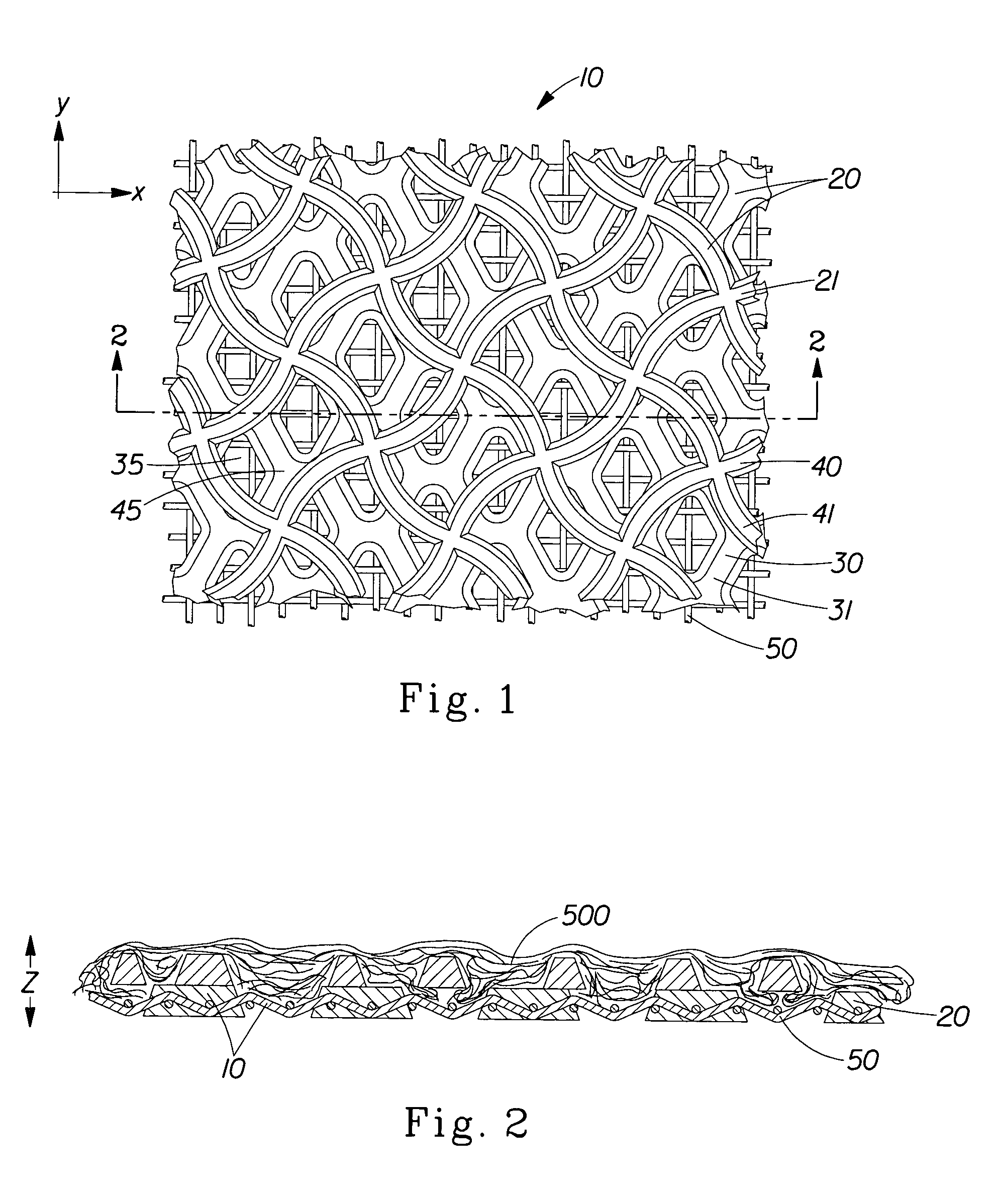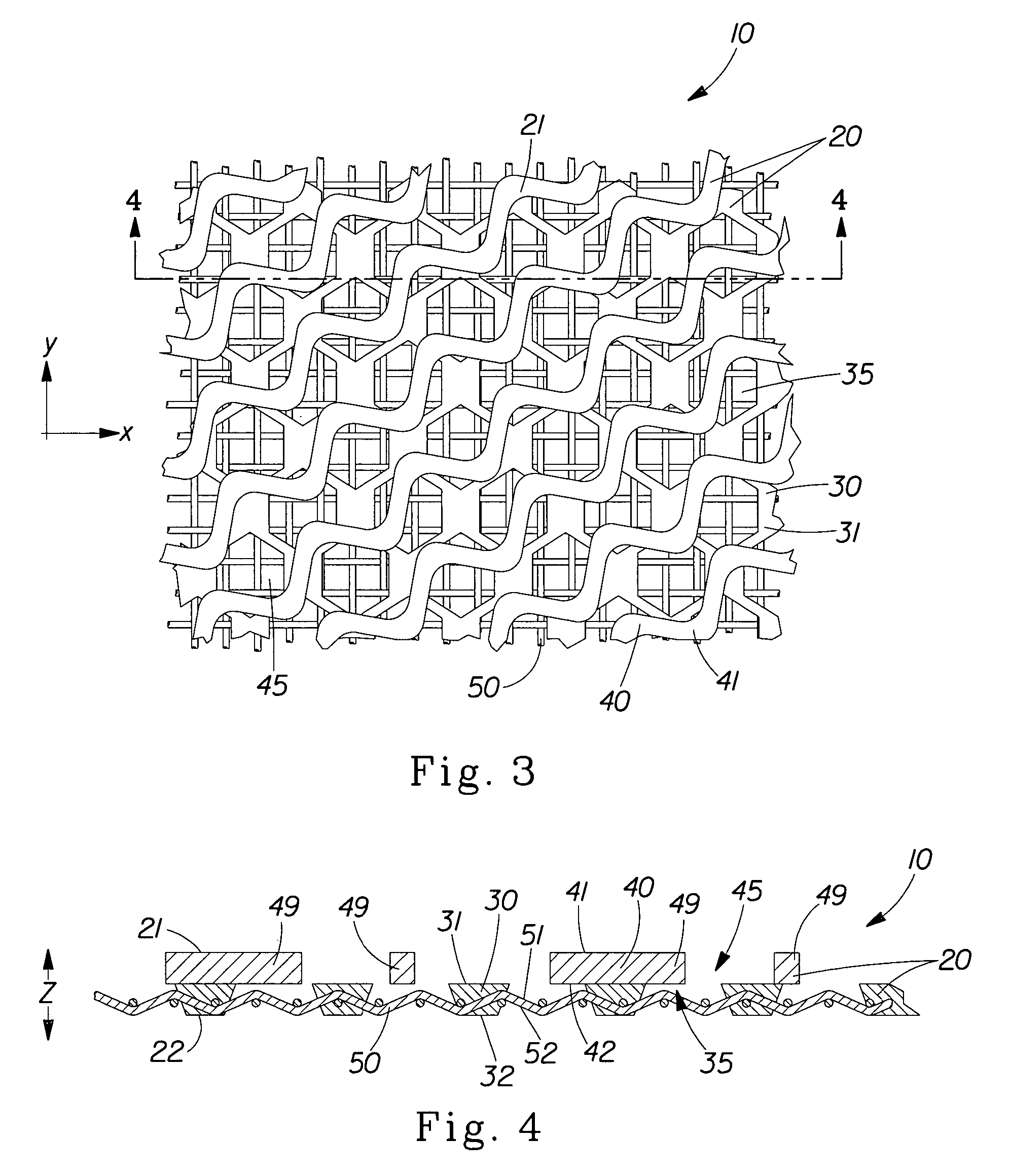Process for producing a fibrous structure having increased surface area
a fibrous structure and surface area technology, applied in the direction of non-fibrous pulp addition, photomechanical equipment, instruments, etc., can solve the problems of affecting the strength of paper, reducing the area of the web comprising the relatively low-density network area that imparts,
- Summary
- Abstract
- Description
- Claims
- Application Information
AI Technical Summary
Benefits of technology
Problems solved by technology
Method used
Image
Examples
example
[0189]The deflection member 10 of the present invention was produced with a first layer 30 comprising nine discrete deflection conduits per square inch, and a second layer 40 comprising forty-one deflection conduits per square inch (“41 / 9” pattern). The conduits' geometry was a diamond with filleted vertices. The cumulative projected open area (ΣR) of the deflection conduits 35 of the first layer 30 was 0.0756 square inches, and the cumulative projected open area of the second layer's deflection conduits was 0.0161 square inches. The first and second specific resulting open areas R1 and R2 (i.e., ratios of the cumulative projected open area of a given layer to a given surface area) was computed to be: R1=68% for the first layer, and R2=66% for the second layer. The thickness of each layer was 0.020 inches. The two-layer structure was bonded to a dual-layer 48×55 mesh belt known commercially as a stacked, warped, dual-layer belt, which is produced by the Appleton Wire Division of Alb...
PUM
| Property | Measurement | Unit |
|---|---|---|
| surface area | aaaaa | aaaaa |
| surface area | aaaaa | aaaaa |
| area | aaaaa | aaaaa |
Abstract
Description
Claims
Application Information
 Login to View More
Login to View More - R&D
- Intellectual Property
- Life Sciences
- Materials
- Tech Scout
- Unparalleled Data Quality
- Higher Quality Content
- 60% Fewer Hallucinations
Browse by: Latest US Patents, China's latest patents, Technical Efficacy Thesaurus, Application Domain, Technology Topic, Popular Technical Reports.
© 2025 PatSnap. All rights reserved.Legal|Privacy policy|Modern Slavery Act Transparency Statement|Sitemap|About US| Contact US: help@patsnap.com



